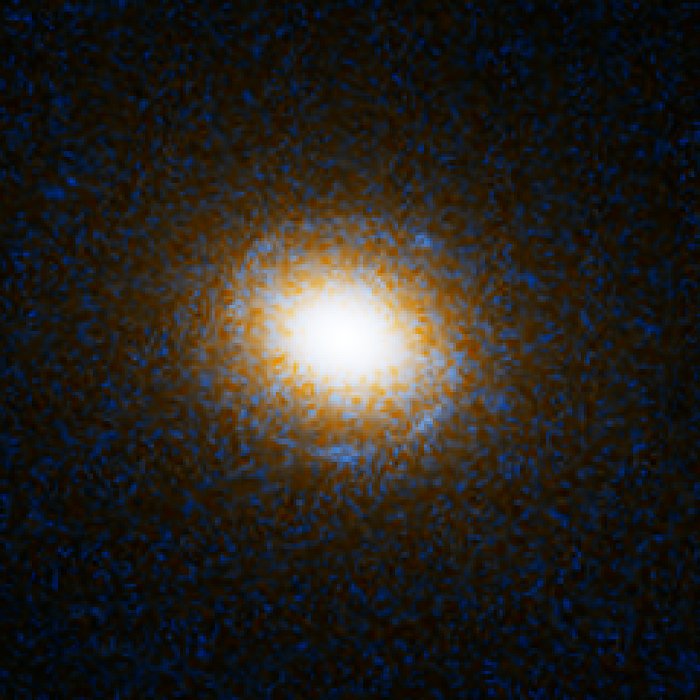Einstein Ring Gravitational Lens: SDSS J140228.21+632133.5
This object is named SDSS J140228.21+632133.5. It is one of eight similar objects found by combining two powerful astronomical assets, the Sloan Digital Sky Survey (SDSS) and NASA's Hubble Space Telescope.
The objects are know as ‘Eienstein rings’ and are perhaps the most elegant manifestations of the gravitational lensing phenomina. Gravitational lensing occurs when the gravitational field from a massive object warps space and deflects light from a distant object behind it, allowing the distant object to be seen. Einstein rings are produced when two galaxies are almost perfectly aligned, one behind the other, giving an image like this with a reddish-white elliptical galaxy in the foreground and a thin ring of blue surrounding it — which is in fact the distorted light from another galaxy twice as far away.
Credit:About the Image
About the Object
| Name: | SDSS J140228.21+632133.5 |
| Type: | Early Universe : Galaxy : Type : Gravitationally Lensed |
| Distance: | z=0.204 (redshift) |
| Constellation: | Draco |
| Category: | Cosmology Galaxies |
Wallpapers
Coordinates
| Position (RA): | 14 2 28.20 |
| Position (Dec): | 63° 21' 33.10" |
| Field of view: | 0.13 x 0.13 arcminutes |
| Orientation: | North is 0.3° right of vertical |
Colours & filters
| Band | Wavelength | Telescope |
|---|---|---|
| Optical B | 435 nm |
Hubble Space Telescope
ACS |
| Infrared I | 814 nm |
Hubble Space Telescope
ACS |


